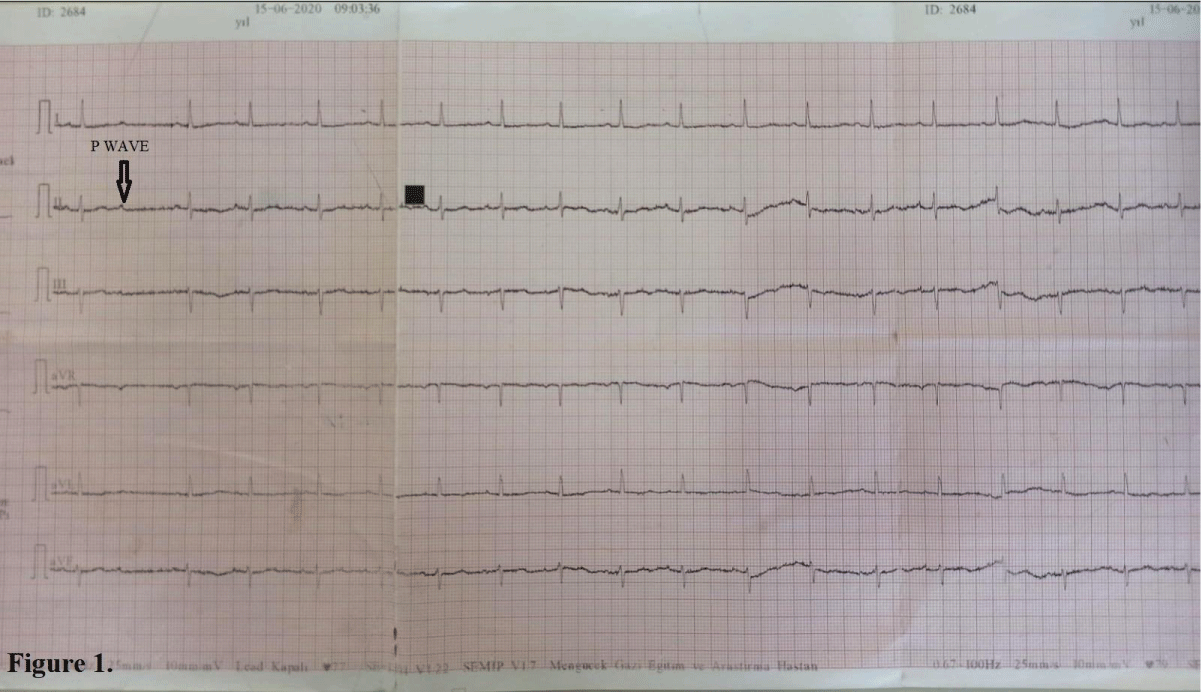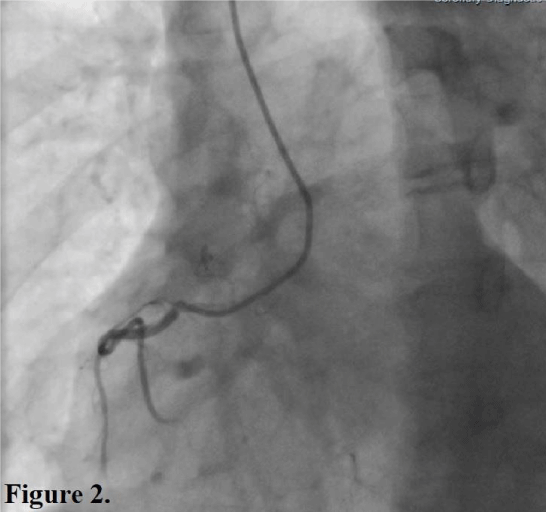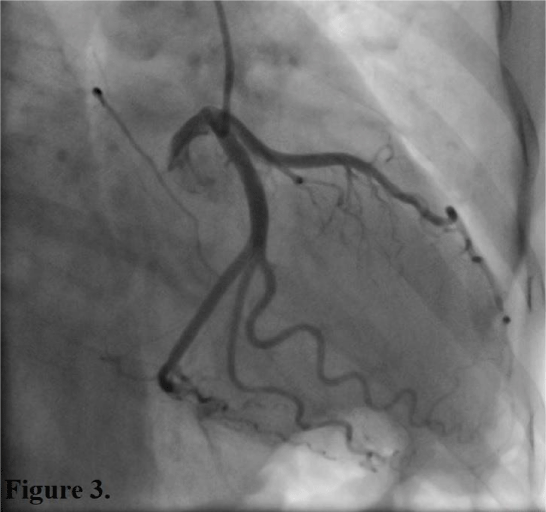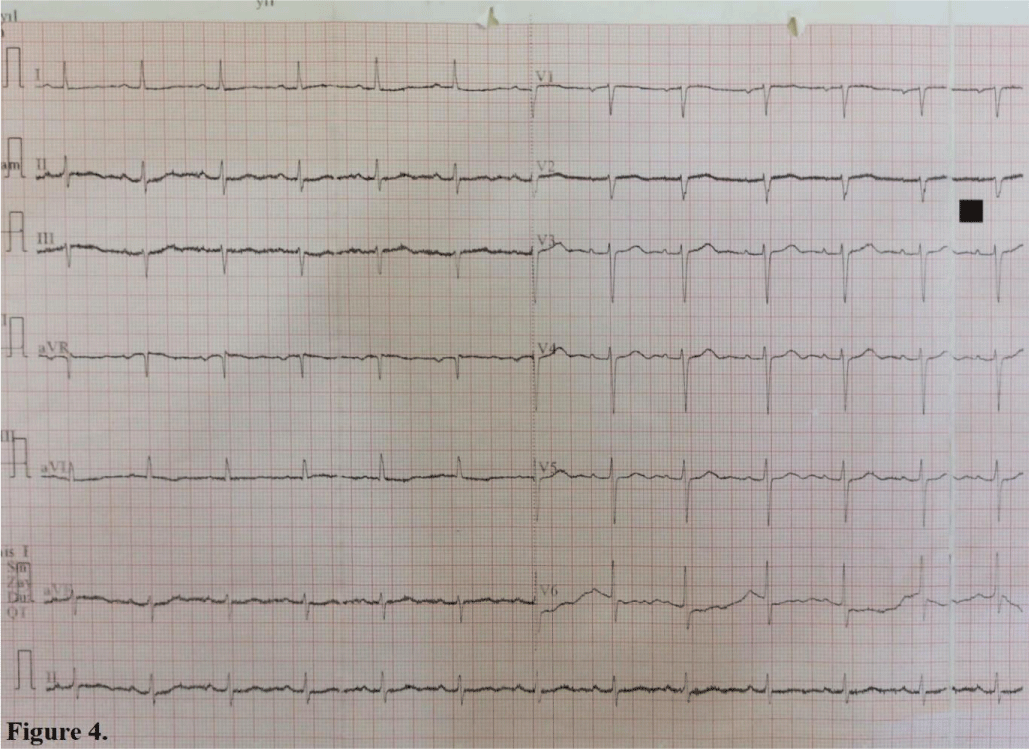Amitriptyline-Induced Bradycardia
Hüsnü Değirmenci*, Muharrem Said Coşgun, Eftal Murat Bakırcı and Mehmet Onur Doğan
Erzincan Binali Yıldırım University, Faculty of Medicine, Department of Cardiology, Turkey
*Address for Correspondence: Hüsnü Değirmenci, Erzincan Binali Yıldırım University, Faculty of Medicine, Department of Cardiology, Erzincan, Turkey, Tel: +90-530-464-5530; ORCID: 0000-0003-0618-7227; E-mail: [email protected]
Submitted: 22 Janauary 2021; Approved: 28 Janauary 2021; Published: 29 January 2021
Citation this article: Değirmenci H, Coşgun MS, Bakırcı EM, Doğan MO. Amitriptyline-Induced Bradycardia. Int J Cardiovasc Dis Diagn. 2021 Jan 29;6(1): 009-012.
Copyright: © 2021 Değirmenci H, et al. This is an open access article distributed under the Creative Commons Attribution License, which permits unrestricted use, distribution, and reproduction in any medium, provided the original work is properly cited
Keywords: Tricyclic antidepressant; Amitriptyline; Low dose; Toxicity
Download Fulltext PDF
Amitriptyline is a tricyclic antidepressant and toxicity symptoms can be seen at low doses. Cardiovascular and neurological findings are at the beginning of these findings. Cardiovascular findings include bradycardia, hypotension and various dysrhythmias. Our case is a 2: 1 atrioventricular block case induced by 2x25 mg Amitriptyline daily. Amitriptyline is important in terms of showing that atrioventricular blocks may develop due to low dose use.
Introduction
Amitriptyline is used in depression, anxiety, post-traumatic stress disorder, insomnia, chronic pain, panic disorder, irritable bowel syndrome, bladder pain syndrome, post herpetic neuralgia and migraine [1,2]. This drug is a tricyclic antidepressant that blocks the reuptake of neurotransmitters such as norepinephrine and serotonin [3]. Amitriptyline has an anticholinergic effect. The effect of this drug begins in 2-4 weeks. Tricyclic antidepressant drugs have potential lethal cardiovascular and neurological effects in poisoned patients. Tricyclic antidepressants cause cardiovascular and neurological effects with central nervous system, sympathetic or parasympathetic effects [4]. Changes in mental status, dysrhythmia, hypotension, seizures and bradycardia are the main effects [4]. Arterial blood pressure measurement and electrocardiographic evaluation play an important role in determining the cardiac toxic effects of these drugs. In this article, we presented a case with amitriptyline-induced bradycardia.
Case Report
A 68-year-old woman presented to the cardiology outpatient clinic with dizziness and fainting. The patient had no additional disease. She applied to psychiatry outpatient clinic 2 weeks ago. After the diagnosis of depression was made by the psychiatry clinic, 1x25 mg/day Amitriptyline was started. The patient used Amitriptyline 2x25 mg/day for 2 weeks. Blood pressure was arterial 110/70 mmHg, respiratory rate 10/min, heart peak rate 75/min. There was an intermittent 2:1 atrioventricular block in the electrocardiography of the patient (Figure 1). Routine hematological, biochemical parameters and thyroid function tests were normal. Coronary angiography was normal (Figure 2,3). There was no secondary reason to explain atrioventricular block other than the use of Amitriptyline in the patient. For this reason, Amitriptyline was discontinued. Hemodynamic and rhythm monitoring was performed on the patient. Subsequently, the patient’s clinic improved. Follow-up electrocardiography was normal sinus rhythm (Figure 4). The patient was followed up for a few more days and was discharged.
Discussion
Central nervous system and cardiovascular system effects are seen in tricyclic antidepressant poisoning. Among these drugs, amitriptyline is responsible for overdose effects by various mechanisms. Inhibition of the uptake of neurotransmitters such as norepinephrine and serotonin, blockade of cardiac fast sodium channels, blockade of central and peripheral anticholinergic receptors, blockade of peripheral alpha 1 adrenergic receptors, blockade of histamine receptors and the blockage of Gamma aminobutyric acid-A receptors in the central nervous system [5-7]. Aminotriptyline may cause heart rate variability, slow intracardiac conduction, corrected QT prolongation, and various arrhythmias [8]. Bradycardia was also observed in our case. In amitriptyline toxicity, if the QRS width is > 100 ms, the corrected QT is > 430 ms, and the R/S ratio in aVR is > 0.7, serial electrocardiography is recommended. Serial electrocardiographic evaluation was performed in our case. In electrocardiographic follow-ups, there was no arrhythmia except intermittent 2:1 block. The use of low doses of amitriptyline in our case may have influenced this result. Amitriptyline is a tricyclic antidepressant and the initial dose in the treatment of depression is 25 mg/day [9]. Our case used the initial dose of 2x25 mg/day. Amitriptyline toxicity is usually seen at doses of 5mg/kg. However, in our case, the drug dose was well below this level. The low weight of our patient and taking the initial dose of medication 2x1 may have caused bradycardia. Moderate toxicity is seen at doses of 50 mg/day, while severe toxicity can be seen at doses of 300 mg/day. In our case, the use of drugs at 50 mg/day and the intermittent 2:1 block suggest moderate toxicity [10].
In conclusion, we should always keep in mind that tricyclic antidepressants such as amitriptyline may have toxic effects at low doses.
- Dopheide JA. Recognizing and treating depression in children and adolescents. Am J Health Syst Pharm. 2006 Feb 1;63(3):233-43. doi: 10.2146/ajhp050264. PMID: 16434782.
- Radley DC, Finkelstein SN, Stafford RS. Off-label prescribing among office-based physicians. Arch Intern Med. 2006 May 8;166(9):1021-6. doi: 10.1001/archinte.166.9.1021. PMID: 16682577.
- Gillman PK. Tricyclic antidepressant pharmacology and therapeutic drug interactions updated. Br J Pharmacol. 2007 Jul;151(6):737-48. doi: 10.1038/sj.bjp.0707253. Epub 2007 Apr 30. PMID: 17471183; PMCID: PMC2014120.
- Açikalin A, Satar S, Avc A, Topal M, Kuvandk G, Sebe A. QTc intervals in drug poisoning patients with tricyclic antidepressants and selective serotonin reuptake inhibitors. Am J Ther. 2010 Jan-Feb;17(1):30-3. doi: 10.1097/MJT.0b013e318197eec6. PMID: 19417591.
- Franssen EJ, Kunst PW, Bet PM, Strack van Schijndel RJ, van Loenen AC, Wilhelm AJ. Toxicokinetics of nortriptyline and amitriptyline: two case reports. Ther Drug Monit. 2003 Apr;25(2):248-51. doi: 10.1097/00007691-200304000-00018. PMID: 12657923.
- Kerr GW, McGuffie AC, Wilkie S. Tricyclic antidepressant overdose: a review. Emerg Med J. 2001 Jul;18(4):236-41. doi: 10.1136/emj.18.4.236. PMID: 11435353; PMCID: PMC1725608.
- Jo SH, Youm JB, Lee CO, Earm YE, Ho WK. Blockade of the HERG human cardiac K(+) channel by the antidepressant drug amitriptyline. Br J Pharmacol. 2000 Apr;129(7):1474-80. doi: 10.1038/sj.bjp.0703222. PMID: 10742304; PMCID: PMC1571977.
- Montgomery SA. Suicide and antidepressants. Ann N Y Acad Sci. 1997 Dec 29;836:329-38. doi: 10.1111/j.1749-6632.1997.tb52368.x. PMID: 9616807.
- Nishimura T, Maruguchi H, Nakao A, Nakayama S. Unusual complications from amitriptyline intoxication. BMJ Case Rep. 2017 Oct 10;2017:bcr2017219257. doi: 10.1136/bcr-2017-219257. PMID: 29018010; PMCID: PMC5652553.
- Hultén BA, Heath A, Knudsen K, Nyberg G, Starmark JE, Mårtensson E. Severe amitriptyline overdose: relationship between toxicokinetics and toxicodynamics. J Toxicol Clin Toxicol. 1992;30(2):171-9. doi: 10.3109/15563659209038629. PMID: 1588667.





Sign up for Article Alerts